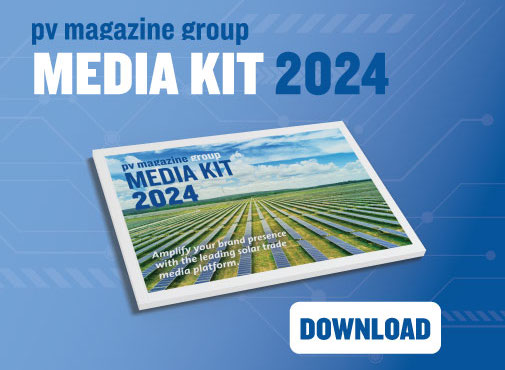Top News
Long-term look at albedo tipped to pay off over project lifetime
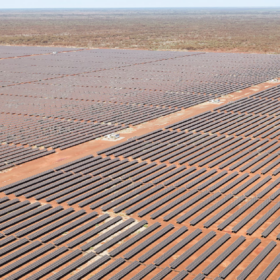
Fortescue announces commissioning of a 100 MW solar farm in the Pilbara
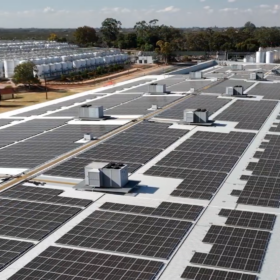
Global wine company toasts power purchase agreement with Origin Zero
Now live: www.ess-news.com
MEDIA KIT 2024
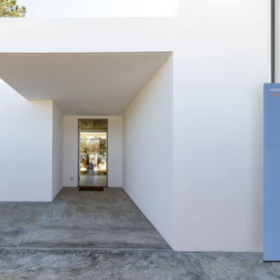
Behind-the-meter battery uptake glitched by New South Wales battery rebate wait
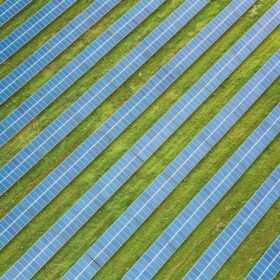
Sinovoltaics shuffles PV module manufacturer financial stability rankings
How long do residential solar batteries last?
Critical mineral report highlights Australia’s solar panel recycling potential
Northern Territory lands $250 million for new transmission projects and upgrades
Press Releases
JinkoSolar Tiger Neo modules boosting Karawang PV project in Indonesia
Government and industry work to accelerate heat pump take-up
Federal government backing small businesses to improve energy performance
Ohme is the new EV charging partner for OSW
Opinion & Analysis
Featured
China’s solar dominance not an issue
Fortescue pauses green hydrogen goal, Australia must forge on
Australian mining and energy giant Fortescue announced last week that its ambitious green energy goal – to produce 15 million tonnes of renewable hydrogen annually by 2030 – will be placed on hold.
No room for nuclear power, unless Coalition switches off rooftop solar
Before renewables came along, coal-fired power stations pumped out electricity (and carbon emissions) 24 hours a day. But now, this type of “always on” baseload power is no longer necessary or commercially viable.
CSIRO brings science, not politics, to electricity cost debate
Some nuclear fans claim Australia’s national science agency has a position on the country’s energy mix. CSIRO Chief Executive Doug Hilton writes that is both wrong and a fundamental misinterpretation of the GenCost report.
Microgrids empowering regional and remote communities across Australia
Small collections of electricity generators, or microgrids, have long been used in disaster recovery, when network supply falters during bushfires or cyclones. But now the technology is being used to provide secure, 24-7 supplies of clean energy in Australian communities where connection to the main electricity grid is but a pipedream.
How companies can bridge gap to net zero and move from talk to transformation
The majority of global companies have set ambitious public targets to reach net zero, but internally many believe there is insufficient effort being made to transform talk of decarbonisation to reality. The team at consulting firm Partners in Performance recently surveyed ~100 senior leaders at global companies to assess the efficacy of their emissions reduction programs.
Markets & Policy
Featured
Winter weather highlights bigger role for batteries
Western Australia mine site to install hybrid power plant with 65 MW capacity
Zenith Energy will build, own and operate a hybrid power station including a 7 MW solar farm and 12 MWh battery energy storage system that will help power operations at Lynas Rare Earths’ Mount Weld mine site in Western Australia
Macquarie’s Eku gets green light for 500 MWh Canberra big battery
The way has been cleared for construction to begin on a 250 MW / 500 MWh battery energy storage system that will help “future proof” the Australian Capital Territory’s energy supply by reducing the load on Canberra’s electricity network and increasing network reliability.
Alinta secures approval for second battery in WA’s southwest
Electricity and gas provider Alinta Energy has received the tick of approval from the Western Australian government to begin construction of a second battery energy storage facility at Wagerup in the state’s southwest.
WTO accuses China of low transparency on state subsidies, including solar
The World Trade Organisation Secretariat has criticised China for an alleged lack of transparency in its state support framework and has urged the nation to improve its subsidy notification process.
Fimer launches sale proceess under extraordinary administration
Inverter manufacturer Fimer has launched a process to sell itself to new owners. Interested investors have until August 31 to submit offers.
Installations
How long do residential solar inverters last?
Frontier Energy lands $215 million to fund Waroona renewable energy project
Western Australia clean energy developer Frontier Energy has been granted $215 million in debt finance for its Waroona Renewable Energy Project south of Perth, from specialist infrastructure fund Infradebt.
Northwestern Victoria earmarked as best potential for renewable energy developments
Victorian transmission infrastructure operator VicGrid has identified over half the state as having potential to host future renewable energy developments, as outlined in its draft Victorian Transmission Plan guidelines.
BrightNight secures grid approval for large-scale solar and battery project
The owner of a 360 MW solar farm and 600 MWh battery energy storage project being developed near Mortlake in southwest Victoria said it has received grid connection approval that paves the way for the next stage of development.
How long do residential solar panels last?
Multiple factors affect the productive lifespan of a residential solar panel. In the first part of this series, we look at the solar panels themselves.
Smart Commercial puts off-grid solar and battery system to work
Renewable energy solutions provider Smart Commercial Solar has unveiled a “ground-breaking” hybrid microgrid that combines 3.98 MW of PV, 4.4 MWh of battery energy storage and an 11 kV private distribution network to help power a large-scale poultry farm in southwest New South Wales.
Technology
Featured
Australia rated global leader in hybrid solar and battery energy solutions: whitepaper
Acen launches approvals process for Cooma solar and battery project
The Australian arm of Philippines-based energy company Acen Corporation has launched the approvals process for a major grid-connected solar and battery energy storage project to be built near the town of Cooma in the New South Wales Snowy Mountains region.
Sunswap rolling out PV-powered transport refrigeration
United Kingdom–based technology company Sunswap has launched Endurance, an electric transport refrigeration system with integrated battery and solar PV. It is built to compete with diesel-powered systems.
Bigger is better as module makers power ahead
Larger wafer and module sizes have had a profound influence on module power output in recent years but standardisation appears to have taken hold, with no further increases evident in module data, according to Molly Morgan, a senior research analyst at Exawatt, which is now part of the CRU Group.
PV Lighthouse lands new funding to develop PV modelling platform
Australian software developer PV Lighthouse has secured almost $2 million in federal to drive the continued development of its SunSolve Yield advanced simulation engine that is designed to improve yield forecasting for utility-scale solar projects.
Researchers develop ‘communicative’ PV panels
A German research team is conducting practical tests to see how solar modules with integrated radio technology can be linked to form an overall network. The “communicative” panels should represent a simple and cost-effective solution for monitoring and controlling small-scale photovoltaic systems.
Manufacturing
Featured
Quinbrook polysilicon plant focus shifts to silica feedstock
Singaporean startup achieves 22.6% efficiency for perovskite solar module
Singfilm Solar said the result has been certified by China’s National PV Industry Measurement and Testing Center.
IEA-PVPS identifies 456 patents in PV module recycling
The IEA Photovoltaic Power Systems Programme’s (IEA-PVPS) latest report on solar panel recycling offers a comprehensive review of all existing technologies in this market segment, from pure mechanical recycling to innovative techniques such as light pulse treatment, water-jet cleaning, pyrolysis, and chemical treatments.
Regulator to nominate CEC as solar panel and inverter assurance body
The Clean Energy Council looks set to be reappointed as the product listing body responsible for maintaining and publishing lists of approved solar panels and inverters eligible for use in Australia’s solar rebate program.
Longi, Aiko Solar, TCL Zhonghuan, Tongwei to post H1 losses
Longi says it expects a net loss of CNY 4.8 billion ($980 million) for the first half of 2024, while Tongwei is bracing for a CNY 3 billion loss. Aiko Solar and TCL Zhonghuan, meanwhile, are predicting losses of CNY 2.9 billion and CNY 1.4 billion, respectively.
Anker launches new all-in-one home storage solution
Chinese electronics manufacturer Anker has developed a new all-in-one home storage solution with up to 30 kWh of capacity, available in single-phase and three-phase configurations.
Energy Storage
Featured
Origin stage two battery approval elevates Eraring’s storage capacity over 2 GWh
Koorangie storage facility hits milestone with delivery of 100 Tesla Megapacks
The Koorangie battery energy storage system being constructed in northwest Victoria has achieved a major milestone with the delivery of 100 Tesla Megapacks with grid-forming inverters that operate in virtual machine mode.
WA targets 6.5 TWh of renewables generation as part of federal deal
Western Australia has locked in federal government funding to build a minimum 6.5 TWh of large-scale solar and wind projects and 1.1 GW of new storage to help ensure the electricity grid remains stable as the state continues its renewable energy transition.
Power purchase agreement bootcamps roll out in New South Wales
A NSW government program is being rolled out for business and local councils that buy over 1 GWh of electricity per year to explain how to procure clean energy from the state’s renewable energy zones using power purchase agreements.
Akaysha progresses plans for 1.6 GWh battery in Queensland
Plans to build another grid-scale four-hour capacity battery energy storage system near the central Queensland town of Gladstone have been submitted to the local council as developer Akaysha Energy continues build up an impressive portfolio of battery storage projects.
Enel Green Power buys 1 GW Tallawang hybrid solar and battery project
Renewable energy company Enel Green Power Australia has bought the proposed 1 GW Tallawang solar and battery energy storage project being developed in western New South Wales from British-based global energy company Renewable Energy Systems.

